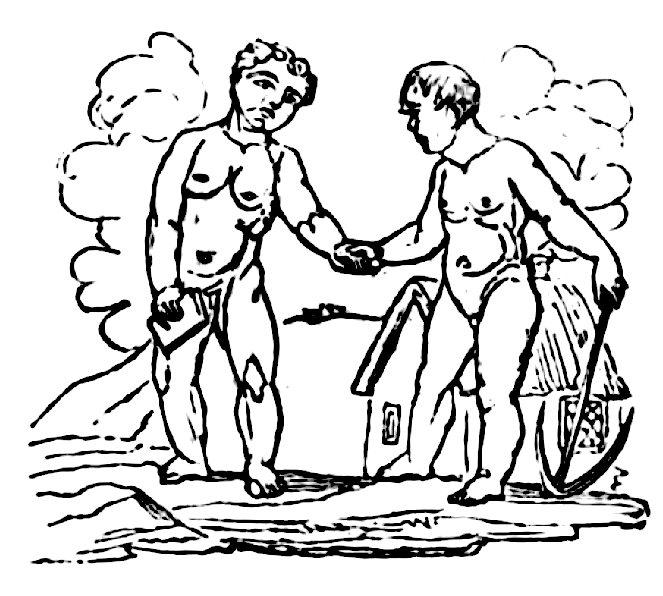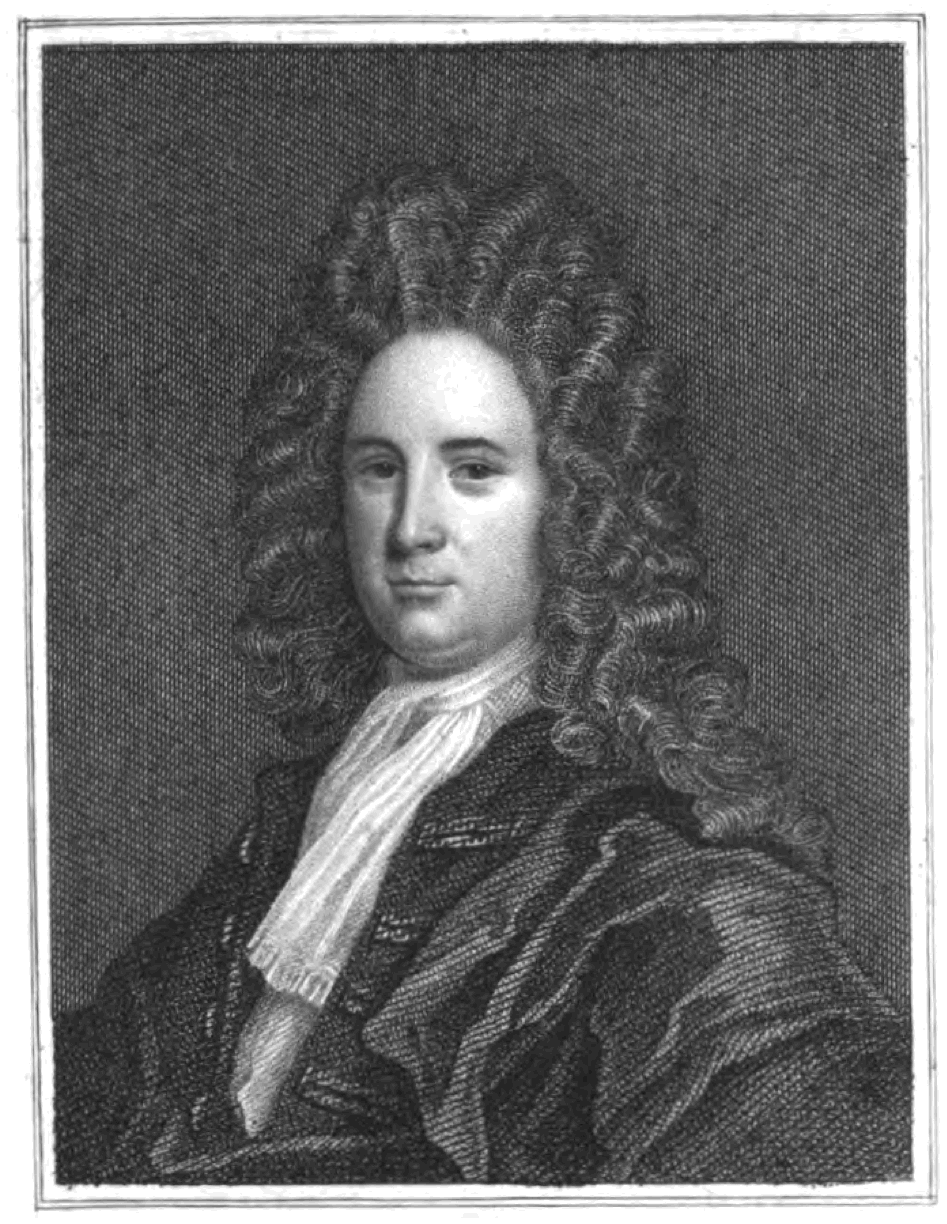

Pigri est ingenii contentum esse his, quæ ab aliis inventa sunt.
SENECA.
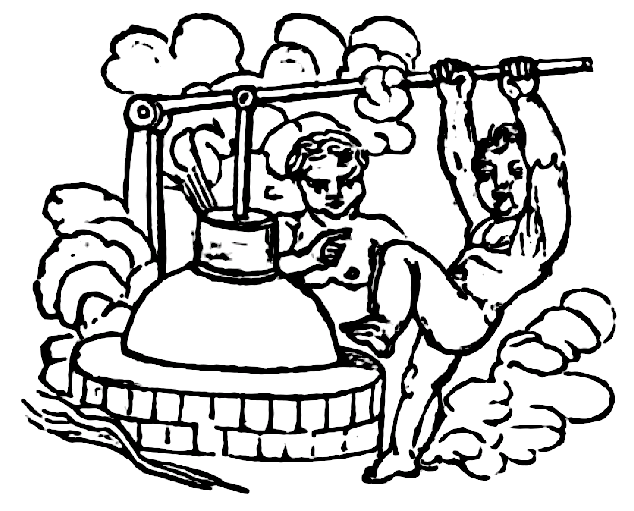
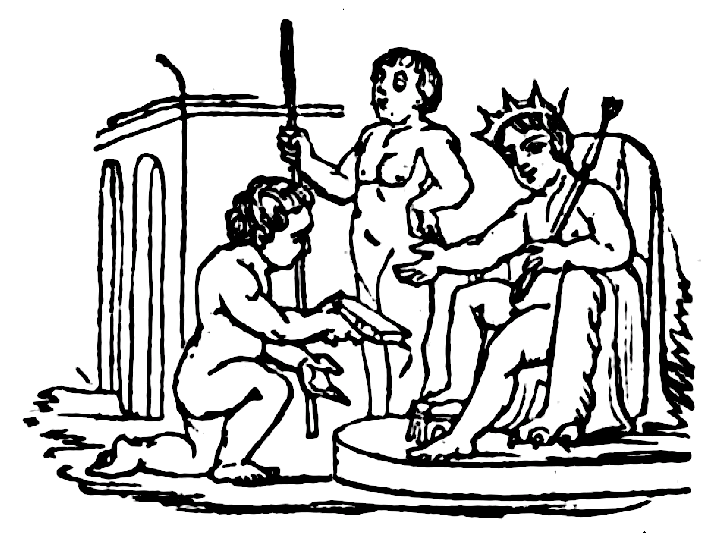
SIR,
Your Majesty having been graciously pleased to permit an experiment
before you at Hampton-court, of a small model of my engine described
in the following treatise, and at that time to show a seeming
satisfaction of the power and use of it; and having most graciously
enabled me, by your royal assent to a patent and act of parliament, to
pursue and perfect the same. By which your royal encouragement, it
being now fully completed, and put in practice in your dominions with
that repeated success and applause, that it is not to be doubted but
it will be of universal benefit and use to all your Majesty’s
subjects. Of whom, your Majesty being the universal patron and father,
all arts and inventions that may promote their good and advantage,
seem to lay a just and natural claim to your Majesty’s sacred
protection.
It is upon this consideration I am encouraged, with a profound respect, to throw this performance of mine, with the author, at your Majesty’s royal feet, most humbly beseeching your Majesty, that, as it had birth in your Majesty’s auspicious reign, you will vouchsafe to perpetuate it to future ages by the sanction of your royal approbation, which is the utmost ambition of,
May it please your Majesty, Your Majesty’s most humble, most loyal, and most obedient Subject, THOMAS SAVERY.
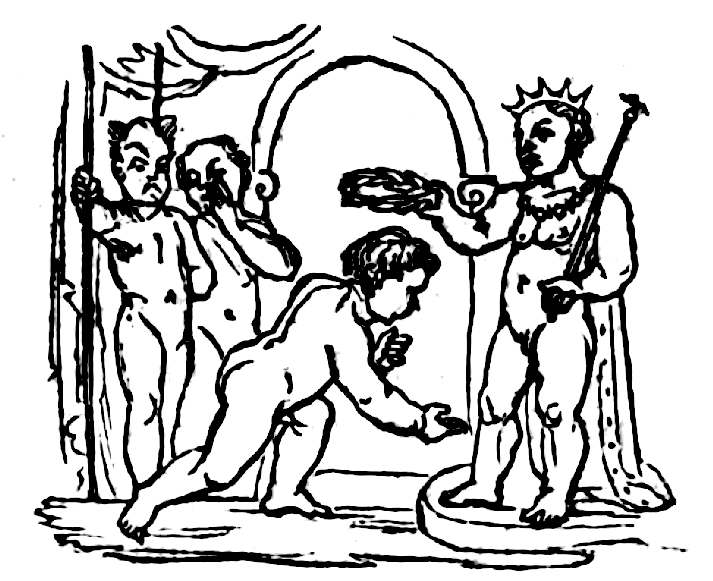
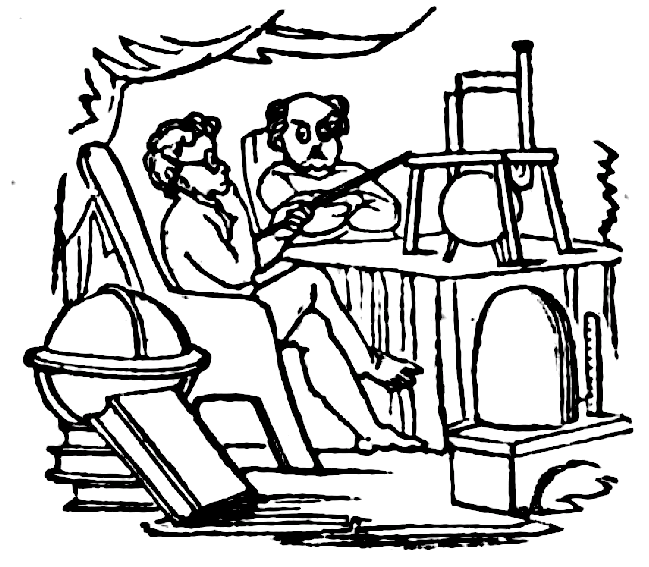
At the request of some of your members, at the weekly meeting, at Gresham-college, June the 14th, 1699, I had the honour to work a small model of my engine before you, and you were pleased to approve of it. Since which I have met with great difficulties and expense, to instruct handicraft artificers to form my engine according to my design; but my workmen, after so much experience, are become such masters of the thing, that they oblige themselves to deliver what engines they make me exactly tight and fit for service, and as such I dare warrant them to any body that has occasion for them.
Your kindness in countenancing this invention in its first appearance in the world, gives me hopes the usefulness of it will make it more acceptable to your honourable Society, as they are the most proper judges of what advantage it may be to mankind. And it would be ungrateful in me not to make use of this opportunity to return you my most humble and hearty thanks for the honour and favour you did me in approving my design, and publishing it to the world,* which shall be always acknowledged by
Your most obliged and most humble Servant, THOMAS SAVERY. * Philosoph. Transact. Numb. 252.
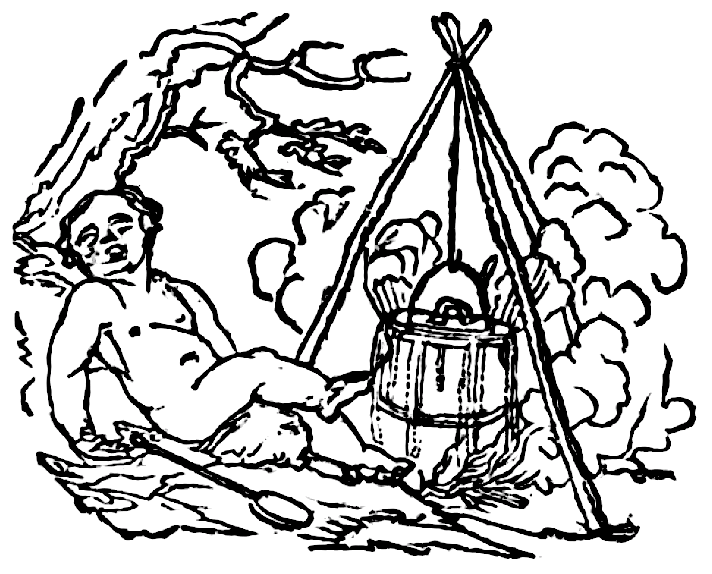
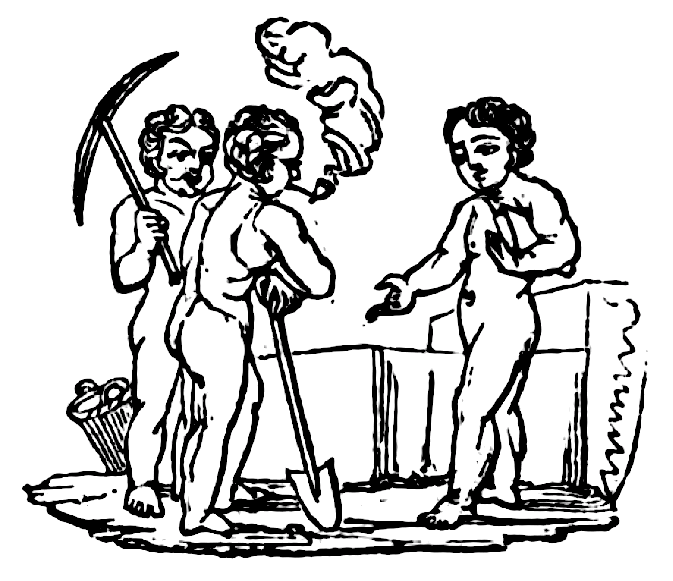
I am very sensible a great many among you do as yet look on my invention of raising water by the impellent force of fire, a useless sort of a project, that never can answer my designs or pretensions; and that it is altogether impossible that such an engine as this can be wrought under ground, and succeed in the raising of water, and draining your mines, so as to deserve any encouragement from you. I am not very fond of lying under the scandal of a bare projector; and, therefore, present you here with a draught of my machine, and lay before you the uses of it, and leave it to your consideration whether it be worth your while to make use of it or no. I can easily give grains of allowance for your suspicions, because I know very well what miscarriages there have been by people ignorant of what they pretend to. These I know have been so frequent, so fair and promising at first, but so short of performing what they pretended to, that your prudence and discretion will not now suffer you to believe any thing without a demonstration, your appetites to new inventions of this nature having been balked too often; yet, after all, I must beg you not to condemn me, before you have read what I have to say for myself; and let not the failures of others prejudice me, or be placed to my account. I have often lamented the want of understanding the true powers of nature, which misfortune has, of late, put some on making such vast engines and machines, both troublesome and expensive, yet of no manner of use, inasmuch as the old engines, used many ages past, far exceeded them; and I fear, whoever, by the old causes of motion, pretends to improvements within this last century, does betray his knowledge and judgment; for more than an hundred years since, men and horses would raise by engines, then made, as much water as they have ever since done, or I believe ever will, or according to the law of nature ever can do; and though my thoughts have been long employed about water-works, I should never have pretended to any invention of that kind, had I not happily found out this new, but yet a much stronger and cheaper force or cause of motion, than any before made use of. But finding this of rarefaction by fire, the consideration of the difficulties the miners and colliers labour under by the frequent disorders, cumbersomeness, and in general of water-engines, encouraged me to invent engines to work by this new force; that though I was obliged to encounter the oddest and almost insuperable difficulties, I spared neither time, pains, nor money, till I had absolutely conquered them. I hope this will, at least, encourage you to read over this small treatise I now put into your hands, for the further and more particular information of the nature and uses of this engine for raising water by the force of fire; after which, I shall patiently submit to any judgment you shall please to pass upon me or the invention, and may have reason to believe you will not any longer suffer your judgments to be imposed on by those, whose profit and interest it may seem to be to condemn both right and wrong; I mean such who make your common gins, and their friends and acquaintance among you; though I am very sure the promotion of the use of this engine is their true interest, as I very plainly prove thus:--
The cheaper water is drawn, the more is the miner encouraged to adventure; the more the miner adventures, the more pits or shafts must be sunk; the more shafts or pits are sunk, the more wood-work will be necessarily employed in timbering them, or supporting the sides from falling in where the earth is loose; besides windlasses and all other utensils of wood used in mines, or the trades depending thereon must be more, which, by increasing the carpenters’ trade in general, will make them sufficient amends for the loss of a small part of that branch of their trade, called gin-making. As for pump-making, that part of the trade will be much improved by my engine; for I must use board and timber for pipes, and have considerable employment for pump-makers and carpenters for timber used about my engine; but shall never employ any other person in making pipes, or any other carpenter’s work I shall have to do, but the person who was before employed in the work, or such as shall be recommended, as a person employed in the mines of the country wheresoever I shall fix engines, provided they will work as cheap, and fairly, and observe the orders and directions given them; for my design is not, in the least, to prejudice the artificers, or, indeed, any other sort of people by this invention; but, on the contrary, is intended for the benefit and advantage of mankind in general, especially the people of my own nation; and wherein, you gentlemen concerned in mines, may, if you please, reap the greatest profit.
And although I do not question but the plan and draught of my engine will be very well and readily understood with many gentlemen, by the description here given; yet it will require a longer time in others to employ their minds and thoughts more intensely about it, especially such as have not been familiar and acquainted with things of this kind; but should the engine, to the apprehension of some, seem intricate and difficult to be worked, after all the description I have given of it in this book, yet I can, and do assure them, that the attending and working the engine is so far from being so, that it is familiar and easy to be learned by those of the meanest capacity, in a very little time; insomuch, that I have boys of thirteen or fourteen years of age, who now attend and work it to perfection, and were taught to do it in a few days; and I have known some learn to work the engine in half an hour. We have a proverb, that interest never lies; and I am assured that you gentlemen of the mines and collieries, when you have once made this engine familiar in your works, and to yourselves and servants; not only the profit, but abundance of other advantages and conveniences which you will find to attend your works in the use thereof, will create in you a favourable opinion of the labours of
Your real Friend and humble Servant, THOMAS SAVERY. London, Sept. 22, 1701.
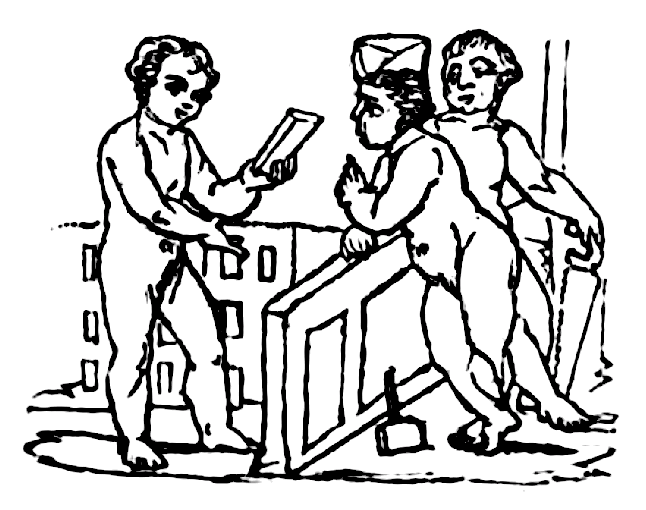
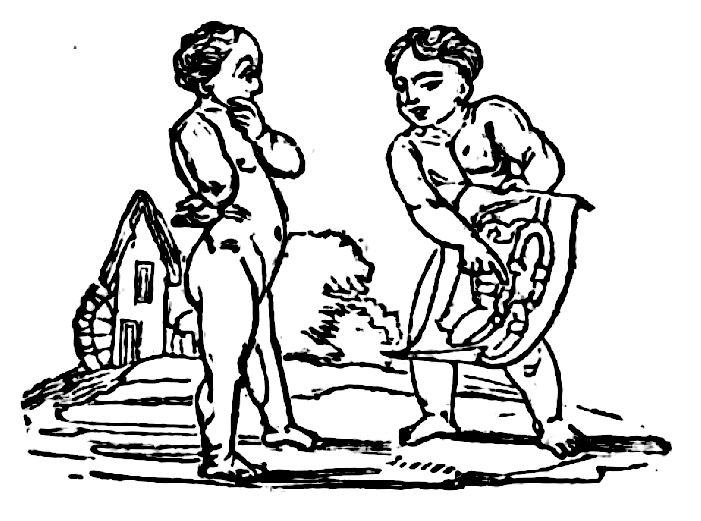
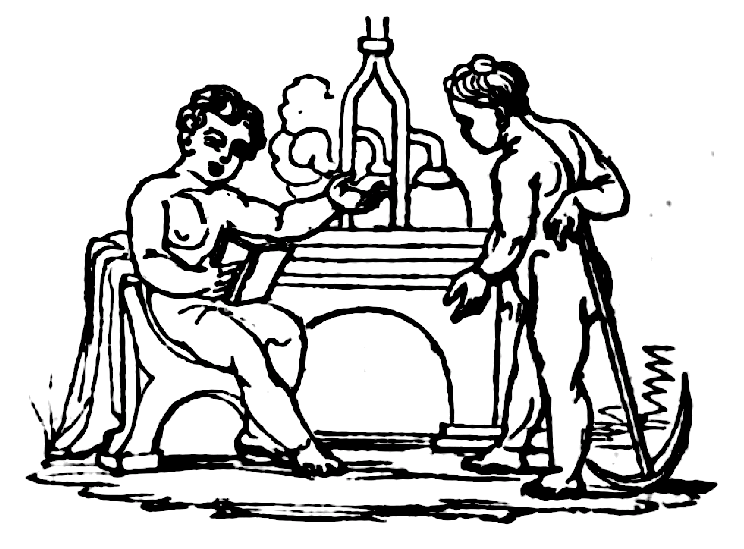
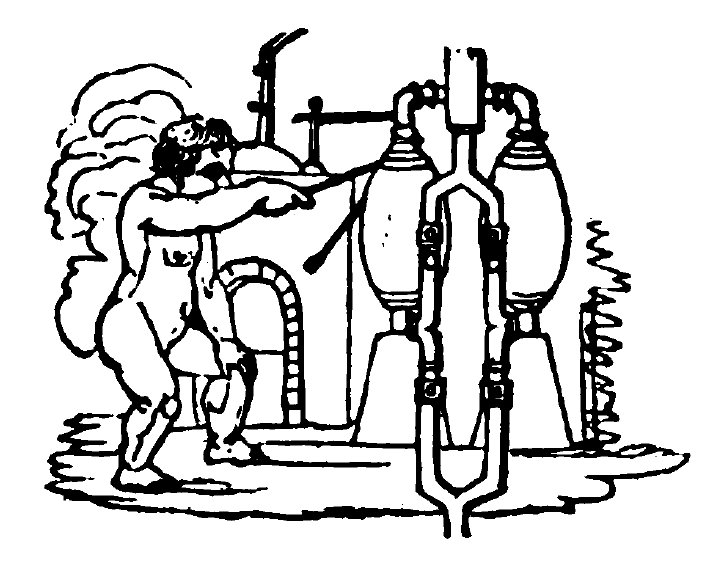
The first thing is to fix the engine in a good double furnace, so contrived that the flame of your fire may circulate round and encompass your two boilers to the best advantage, as you do coppers for brewing. Before you make any fire, unscrew g and n, being the two small gauge-pipes and cocks belonging to the two boilers, and at the holes, fill l, the great boiler, two-thirds full of water, and d, the small boiler, quite full; then screw in the said pipes again as fast and light as possible; then light the fire at b. When the water in l boils, the handle of the regulator, marked z, must be thrust from you as far as it will go, which makes all the steam rising from the water in l pass with irresistible force through o into p, pushing out all the air before it, through the clack, r, making a noise as it goes; and when all is gone out, the bottom of the vessel, p, will be very hot; then pull the handle of the regulator to you, by which means you stop o, and force your steam through o into the p, until that vessel has discharged its air through the clack, r, up the force-pipe. In the mean time, by the steam’s condensing in the vessel p, a vacuum or emptiness is created, so that the water must, and will, necessarily, raise up, through t, the sucking-pipe, lifting up the clack, r, and filling the vessel, p.
In the mean time, the vessel, p, being emptied of its air, turn the handle of the regulator from you again, and the force is upon the surface of the water in p, which surface being only heated by the steam, it does not condense it, but the steam gravitates or presses with an elastic quality like air; still increasing its elasticity or spring, till it counterpoises, or rather exceeds the weight of the water ascending in s, the forcing-pipe, out of which, the water in p will be immediately discharged when once gotten to the top, which takes up some time to recover that power; which having once got, and being in work, it is easy for any one that never saw the engine, after half an hour’s experience, to keep a constant stream running out the full bore of the pipe, s; for, on the outside of the vessel, p, you may see how the water goes out, as well as if the vessel were transparent; for, as far as the steam continues within the vessel, so far is the vessel dry without, and so very hot, as scarce to endure the least touch of the hand; but as far as the water is, the said vessel will be cold and wet, where any water has fallen on it; which cold and moisture vanishes as fast as the steam, in its descent, takes place of the water; but if you force all the water out, the steam, or a small part thereof, going through r, will rattle the clack, so as to give sufficient notice to pall the handle of the regulator to you, which, at the same time, begins to force out the water from p, without the least alteration of the stream; only, sometimes, the stream of water will be somewhat stronger than before, if you pull the handle of the regulator before any considerable quantity of steam be gone up the clack, r; but it is much better to let none of the steam go off, for that is but losing so much strength, and is easily prevented, by polling the regulator some little time before the vessel forcing is quite emptied. This being done, immediately turn the cock or pipe of the cistern, x, on p, so that the water proceeding from x, through y, which is never open but when turned on p, or P; but when between them, is tight and stanch; I say, the water, falling on p, causes, by its coolness, the steam, which had such great force just before to its elastic power, to condense, and become a vacuum or empty apace, so that the vessel, p, is, by the external pressure of the atmosphere, or what is vulgarly called suction, immediately refilled, while p is emptying; which being done, you push the handle of the regulator from you, and throw the force on p, pulling the condensing pipe over p, causing the steam in that vessel to condense, so that it fills, while the other empties. The labour of turning these two parts of the engine, viz. the regulator and water-cock, and attending the fire, being no more than what a boy’s strength can perform for a day together, and is as easily learned as their driving of a horse in a tub-gin; yet, after all, I would have men, and those, too, the most apprehensive, employed in working of the engine, supposing them more careful than boys. The difference of this charge is not to be mentioned or accounted of, when we consider the vast profit which those who use the engine will reap by it.
The ingenious reader will, probably, here object, that the steam being the cause of this motion and force, and that steam is but water rarefied, the boiler, l, must in some certain time be emptied, so as the work of the engine must stop to replenish the boiler, or endanger the burning out or melting the bottom of the boiler.
To answer which, please to observe the use of the small boiler, d, when it is thought fit by the person tending the engine to replenish the great boiler, which requires an hour and a half, or two hours’ time to the sinking one foot of water; then, I say, by turning the cock of the small boiler, e, you cut off all communication between s, the great force-pipe, and d, the small boiler, by which means d grows immediately hot, by throwing a little fire into b, and the water of which boils, and in a very little time it gains more strength than the great boiler; for the force of the great boiler being perpetually spending and going out, and the other winding up, or increasing, it is not long before the force in d exceeds that in l, so that the water in d being depressed in d by its own steam or vapour, must necessarily rise through the pipe, h, opening the clack, i, and so go through the pipe, k, into l, running till the surface of the water in d is equal to the bottom of the pit, h; then steam and water going together, will, by a noise in the clack, i, give sufficient assurance that d has discharged and emptied itself into l, to within eight inches of the bottom; and inasmuch as, from the top of d to the bottom of its pipe, h, is contained about as much water as will replenish l, one foot, so you may be certain l is replenished one foot of course; then you open the cock, i, and refill d immediately; so that here is a constant motion without fear or danger of disorder, or decay, if you would, at any time, know if the great boiler, l, be more than half exhausted, turn the small cock, n, whose pipe will deliver water, if the water be above the level of its bottom, which is half way down the boiler; if not, it will deliver steam. So, likewise, will g show you if you have more or less than eight inches of water in d, by which means nothing but a stupid and wilful neglect, or mischievous design, carried on for some hours, can any ways hurt the engine; and if a master is suspicious of the design of a servant to do mischief, it is easily discovered by those gauge-pipes; for if he come when the engine is at work, and find the surface, c, of the water in l, below the bottom of the gauge-pipe, n, or the water in d below the bottom of g, such a servant deserves correction, though three hours after that, the working on would not damage or exhaust the boilers; as that, in a word, the clacks being in all water-works always found the better the longer they are used, and all the moving parts of our engine being of like nature, the furnace being made of Stourbridge, or Windsor brick, or fire-stone, I do not see it possible for the engine to decay in many years; for the clacks, boxes, and mitre-pipe, regulator, and cocks, are all of brass; and the vessels made of the best hammered copper, of sufficient thickness to sustain the force of the working the engine. In short, the engine is so naturally adapted to perform what is required, that even those of the most ordinary and meanest capacity may work it for some years without any injury, if not hired or employed by some base person on purpose to destroy it; for after the engine is once fixed, and at work, I may modestly affirm that the adventurer, or supervisor of the mine, will be freed from that perpetual charge, expense, and trouble of repairs, which all other engines ever yet employed in mines for the raising of water, are continually liable unto.
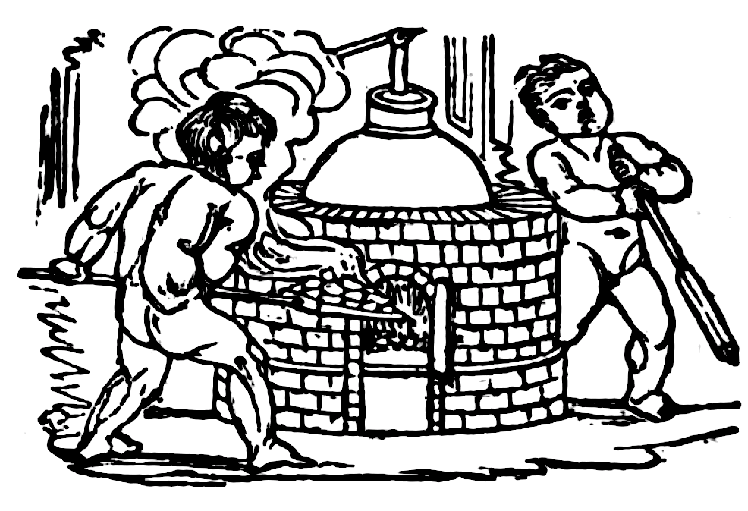
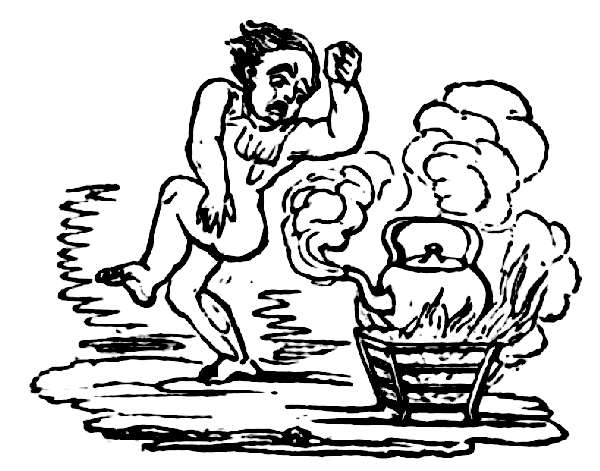
It may be supposed that there are few people among us so ignorant, but must necessarily know of what value the falls of water are in most places, as being applicable to mills, which are made after various kinds and forms, according to the different genius and abilities of the millwright, for mill-work being in a manner infinitely diversified; and had I leisure to comment thereon, and give you an account, not only of the vast variety that I have seen and heard of, but (when encouraged) what may yet be brought to work by a steady stream, and the rotation or circular motion of a water-wheel, it would swell these papers to a much larger volume than was at first designed, and frustrate my intended brevity. I only just hint this to show what use this engine may be put to in working of mills, especially where coals are cheap.
I have only this to urge, that water, in its fall from any determinate height, has simply a force answerable and equal to the force that raises it. So that an engine which will raise as much water as two horses working together at one time in such a work can do, and for which there must be constantly kept ten or twelve horses for doing the same, then, I say, such an engine will do the work or labour of ten or twelve horses; and whereas this engine may be made large enough to do the work required in employing eight, ten, fifteen, or twenty horses to be constantly maintained and kept for doing such a work, it will be improper to stint or confine its uses and operation in respect of water-mills.
2. It may be of great use for palaces, for the nobility’s or gentlemen’s houses; for, by a cistern on the top of a house, yoy may, with a great deal of ease and little charge, throw what quantity of water you have occasion for to the top of any house; which water, in its fall, makes you what sorts of fountains you please, and supplies any room in the house, and it is of excellent use in case of fire, of which more hereafter.
3. Nothing can be more fit for serving cities and towns with water, except a crank-work by the force of a river. In the composing such sort of engines, I think no person hath excelled the ingenious Mr. George Sorocold; but where they are forced to use horses, or any other strength, I believe no ingenious person will deny this engine to have the preference in all respects, being of more universal use than any yet discovered or invented.
4. As for draining fens, marshes, &c. I suppose I need say no more than this, that that force which will raise great quantities of water a height of above eighty feet, must necessarily deliver a much greater quantity at a lesser height; and that it is much cheaper, and every way easier, especially where coals are water-borne, to continue the discharge of any quantities of water by our engine, than it can be done by any horse-engines whatsoever.
5. I believe it may be made very useful to ships, but I dare not meddle with that matter, and leave it to the judgment of those who are the best judges of maritime affairs.
6. For draining of mines and coal-pits the use of the engine will sufficiently recommend itself in raising water so easy and cheap; and I do not doubt, but that, in a few years, it will be a means of making our mining trade, which is no small part of the wealth of this kingdom, double, if not treble to what it now is. And if such vast quantities of lead, tin, and coals, are now yearly exported, under the difficulties of such an immense charge and pains as the miners, &c. are now at to discharge their water, how much more may be hereafter exported, when the charge will be very much lessened by the use of this engine every way fitted for the use of mines? For the far greater part of our richest mines and coal-pits are liable to two grand inconveniences, and thereby rendered useless, viz. the irruption and excess of subterraneous waters, as not being worth the expense of draining them by the great charge of horses, or hand labour. Or, secondly, fatal damps, by which many are struck blind, lame, or dead, in these subterraneous cavities, if the mine is wanting of a due circulation of air. Now, both these inconveniencies are naturally remedied by the work of this engine, of raising water by the impellant force of fire.
For the water, be the mine ever so deep, each engine working it sixty, seventy, or eighty feet high, by applying or setting the engines one over another, as shall be showed at large hereafter in the following pages, you may, by a sufficient number of engines, keep the bottom of any mine dry; and when once you know how large your feeder or spring is, it is very easy to know what sized engine, or what number of engines will do your business.
The coals used in this engine is of as little value as the coals commonly burned on the mouths of the coal-pits are; for an engine of a three-inch bore, or thereabout, working the water up sixty feet high, requires a fire-place of not above twenty inches deep, and about fourteen or fifteen inches wide, which will occasion so small a consumption, that in a coal-pit it is of no account, as we have experienced. And in all parts of England, where there are mines, coals are so cheap, that the charge of them is not to be mentioned, when we consider the vast quantity of water raised by the inconsiderable value of the coals used and burnt in so small a furnace. What the quantity of coals used for one engine in a year is cannot easily be ascertained, because of the different nature of the several sorts of coals.
As for the cure of damps by this engine, the air perpetually crowding into the ash-hole and fire-place, as it is natural for it to do, and with a most impetuous force discharged with the smoke at the top of the chimney, the contiguous air is successively following it; so that not only all steams or vapours whatsoever, that may or can arise, must naturally force its way through the fire, and so be discharged at the top with the smoke, but this motion of the fire will occasion the fresh air to descend from above down all the pits, and every where else in the mine, but down the chimney; provided you have a heading drift, or passage from all the shafts or pits in the work, to that place where the engine stands; whether the mouth of the said pit and chimney be lower or higher than the mouths of any of the rest of the pits or shafts in the same work it matters not, for here will be a perpetual circulation of the air, and with that swiftness as is hardly to be believed. This I have tried and know to be true, so leave the ingenious miner to his own judgment, whether, when all the air is in a swift motion, that any stagnation of air (which has always been adjudged the cause of damps) can happen in any pit.
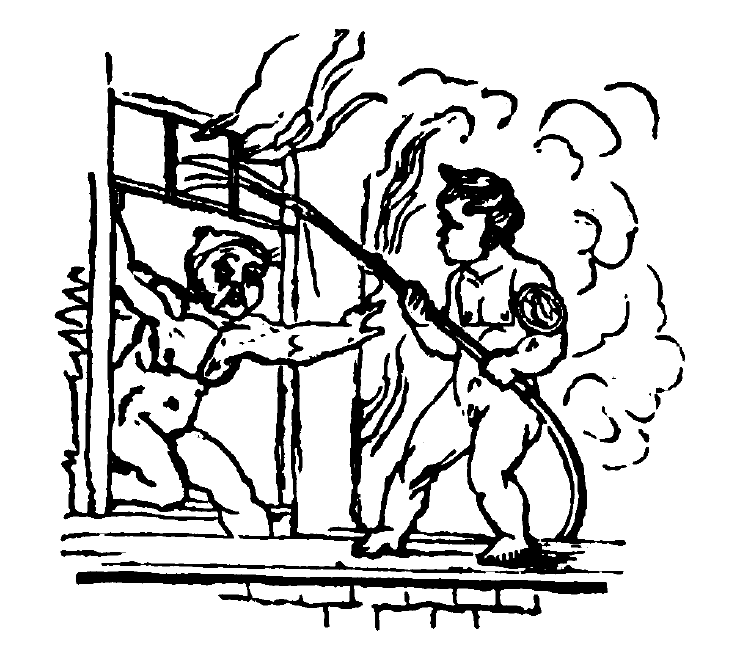
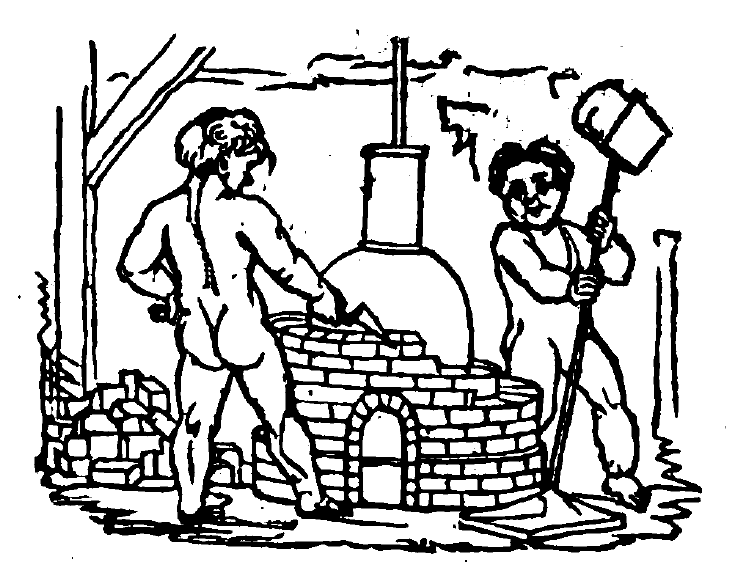
1. For mills. The engine must be made and proportioned according to the quantity of water required to drive the mill you would make use of. Now suppose you would make a mill on a plain place, where you will have only a pond, and a small spring of water no bigger than a quill; then you must build your mill-house thirty-six feet high, in which you may make what motions, and what sort of mills you please. By the side of which house without, may be placed your water-wheel of thirty-two, thirty-three, or thirty-four feet diameter. For the height of either house or wheel I would confine no person too exactly, but I guess that a convenient height, and no more than what is common enough. Under the wheel I would have a pond, and on the top of the house a cistern of wood lined with lead. The engine may be fixed in any corner of the mill-house, twenty, twenty-one, twenty-two feet, or more, from the level of the pond: there two boilers must be fixed, as shown you in the draught for fixing the engine; and round each of them it is convenient to have a hoop of iron, with straps coming from them to rest on the brick-work, to support and strengthen them. Your clacks and pipes in the front being supported by wood, and the vessels standing on pedestals of wood, it is convenient that the flue, or chimney, be so contrived as to draw very sharp, and the flue to circulate round both the boilers, so that you may lose no part of your strength.
2. For palaces, or the nobility’s or gentlemen’s houses, you may fix the engine in any remote or out-room, whose floor is not above twenty feet from the level of your water, and you may continue your force-pipe to the top of your house, with a convenient cistern to hold your water; into which lay the pipes which may convey the water as you want it, either for pleasure or common occasions. This way of cisterns on the top of your houses or palaces would be of singular use in case of fire, as is said before; for in every staircase a pipe may go down the corner, or behind the wainscot, so as to be no blemish even to the finest of staircases. At every floor there may be a turn-cock with a screw. At the utmost end have likewise a small leather pipe, kept well oiled in a cupboard, or cavity in your wall, which may not be seen, but on the opening some part of the wainscot, or such other contrivance as the ingenious builder shall think fit to make use of. This pipe of leather must be long enough to reach from the landing-place, or stair-head, in all rooms depending thereon. One end of this pipe has a screw to fit the cock in the other pipe, and at the other end a pipe like the nose of a pair of bellows; so that wherever, though under a bed, or the remotest part of any room in the house, the fire breaks out, or is discovered, any servant having screwed the pipe to the cock, stops the nozle with his thumb till he comes to the place where the fire is, when, taking away his thumb, he, by directing the nozle to the fire, immediately extinguishes it, which being liable to be instantly used, I think a house, palace, &c. that has this invention, may be said to be morally out of danger of being destroyed, or so far injured as Whitehall and Kensington have been within a few years. This command of water must be allowed to be of vast advantage to any house whatsoever. Where brewing, washing, &c. is used, the copper standing high may be filled as easy as if it stood low, by which means the hot liquor may be contrived to go to all your coolers, and other vessels, either by a syphon, stop-cock, &c. without the hand-labour of pumping or bailing with buckets. But more conveniencies than we can at present foresee will be discovered in the use of this engine for palaces, houses, &c.
3. For fens, and the like, it is convenient that these engines be made very large; for at all small heights a small quantity of fire will deliver prodigious quantities of water. For suppose we force but thirty feet, and suck twenty feet, if the boiler does but fill the vessels, called receivers, with steam strong enough to counterpoise or exceed the force of the atmosphere, or spring of the common air, it will discharge them at so small a height as thirty feet force in a very little time; and the steam having very little force or spring is immediately condensed, so that it will presently suck full in one of the vessels while the other is discharged. Now, inasmuch as the fire being more or less adds nothing to the suction. I think such lifts, being seldom above thirty-six feet, or under six feet, all the directions further needful for fixing the engine for this use is, in all lifts under twenty-four feet, to place your engine so as a little above your force-clacks may be the place of the delivery of your water into a convenient trough or lander, to be carried off at the most proper place for its discharge. If it be any height above twenty-four feet, you have nothing to do but to continue the length of your force-pipe to the height required. It ought to have a shed or covering round it, and to be placed at the lowest place of your fen or bog, as other engines designed for that purpose commonly are.
As for fixing the engine in ships, when they may be thought probably useful, I question not but we may find conveniency enough for fixing them.
In mines and coal-pits the manner of fixing the engines is this; your pit being sunk, and a sump, or proper well, or bottom cistern, made to receive the water coming from the several feeders or springs. Supposing an engine, carrying three and a quarter inch bore, is to be fixed to deliver water about seventy feet high, constant running a full bore; in such case you make a small room in your shaft or pit, which, together with your shaft or pit, is nine feet square every way. As for example, suppose your shaft six feet by four, take three feet out of one side, and five out of another perpendicular nine feet, making a small floor or platform of boards over that part of the shaft which goes down to your sump or bottom cistern, so you have a complete room big enough for your engine, where ten or twelve people may stand on occasion. This floor may be about eighteen, nineteen, or twenty feet from the water, at the lowest you ever will draw the water into the sump or bottom cistern. If your ground be loose, it is convenient to line this room with brick; if rock, it may support itself. But in this the miner’s judgment must direct him. That the engine will stand best in the side of the pit where most is dug away, you may see in the second figure of the engine, being fixed in a mine. Your pipes, &c. must be fixed with cramps of iron, wood, or such materials as are convenient, to the side of the pit or shaft, so as to make it stand as firm as the very shaft itself. Your furnace must be so contrived, that your flame take a turn or two round each of the boilers, which any brick-layer used to furnaces can do; it being performed by running a row of bricks round them both like a screw or worm, which being contiguous to the wall of the furnaces and the boilers, makes it, as it were, a worm-funnel round them both; from whence you may continue your chimney to the top of your work, which you fasten to the sides of your shafts in the corners as you please, either with iron or wood, or both, according to the nature of the ground. And wherever you make a sudden bend or nook near a right angle in the chimney, have a loose brick or stone to take out the soot, if any should settle in such place, which in long working it may do.
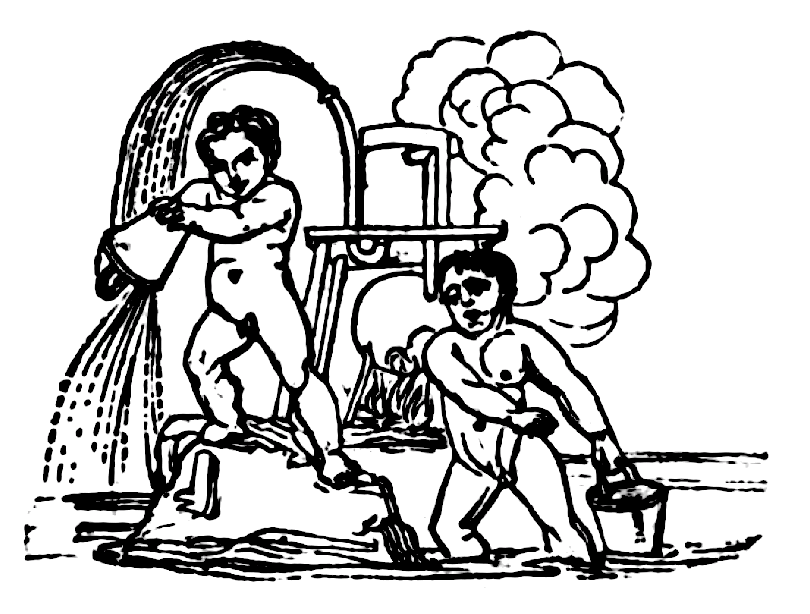
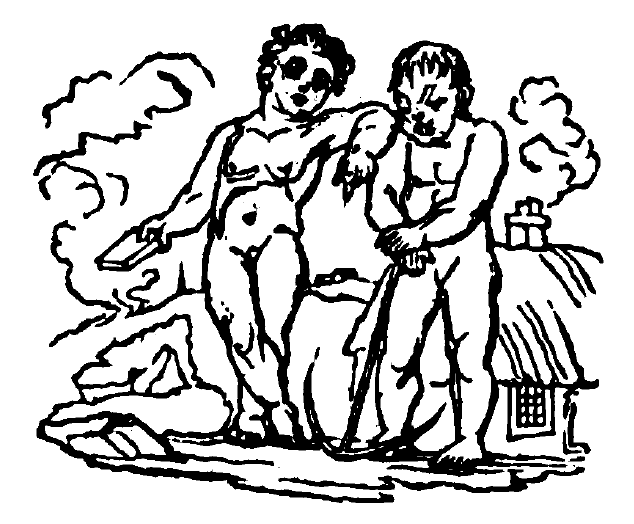
Miner . Sir, having been some time concerned in the engines now used for drawing water out of our mines, and hearing so much talk of this wonderful invention of yours, of raising water by fire, I was very desirous to enter into some discourse with you concerning the nature, use, and application of your engine, so strangely differing from all other engines ever yet invented for our works, and which, you positively affirm, will every way tend so much to our advantage in the use of them; and I do not doubt of meeting with that plainness, freedom, and good humour, that your discourse is generally accompanied with. And with the same freedom resolve me in such questions as the general sense of us miners may naturally propose to object against the use of your engine, especially such of us as are yet ignorant of its use and operation, who are more capable to judge of fact, than of the nature and power of that force which raises your water.
Author . Sir, I am extremely obliged to you for your freedom, and shall readily embrace all opportunities to inform and explain to you the true use and nature of my engine; and, therefore, desire you, with all imaginable freedom, to proceed and ask what questions you please, either as to your own thoughts, as well as what has been suggested to you by others. And you may be assured of a plain and candid answer to all your objections.
Miner . Then, sir, which way will you go to work with your engine to clear an old work full of water?
Author . Why, sir, to deal plainly with you, if your shafts are, or may be cut straight, your tub-engines, or chain pumps, may draw forth the water. And the charge, in that respect, is not to be accounted for, because no mine would be thrown up or neglected but on account of the feeders or springs, which being certain, and constantly to be carried off winter and summer, the prospect of being likely to succeed, makes your mine worth working or emptying within twenty feet of the bottom, if ever they were worth sinking, though you work or drain by the common way of tubs or chain-pumps. And could the constant charge of those engines be afforded, numbers of them will empty and keep under any work; but it is the constant charge of carrying off what the springs bring in is the chief thing to be considered in the business of mines, which constant charge is what we lessen very much by this engine of mine.
Miner . What signifies your engine then, sir, if it be not capable of sinking or forking an old mine?
Author . Hold, my good friend, a little patience; I have dealt plainly and impartially with you about the use of your old engines: and for my engine, it will clear an old work, if full of water, as readily as your tub-gins or chain-pumps, provided the shafts are good. The method I propose to clear an old mine, if sixty feet deep, and full of water, the feeders not above two-inch bore, which is done at a very small charge after this manner; viz. I fix my engine on the top of the mine, and only suck and deliver a three and a quarter inch bore; as soon as we have sunk the water as far as our suction will go, which will be some twenty-two, twenty-four, or twenty-six feet deep below the surface, there I make a room fit to receive another engine, which I fix with his force-pipe to go up to the top of the pit; and when I have sunk about twenty-four or twenty-six feet more, then I fix a smaller engine of two inches bore, which, sucking twenty, and forcing forty, does your work and keeps all safe; or let your small engine be kept at work, while you remove the larger engine from the top to the middle station, and then you will have occasion for no more than two engines, the greatest of which may be removed as soon as the smaller is fixed in the lowest or proper station. And that you may be convinced of my impartiality, it is my opinion, that in gaining an old work, or sinking a new one, you use your old engines of tub or chain-pumps: this engine of mine being most proper, when you are come fairly to the bottom either of the ore or coal; for then, if you have but one lift, one station or engine-room will be sufficient. And by having two sumps or bottom cisterns, your water may, in some measure, settle in one of them in its passage to the other. So that the miners working tolerably clean, and suffering as little dead or loose coal or ore as is possible to mix with the water, you may have the water to draw only a little discoloured; for you know, as well as I, that generally the water coming from mines or coal-pits, while they work by the gins now in use, is almost clear water.
Miner . Sir, I thank you for your candour in relation to the clearing of an old work. But supposing that our water arises thick and muddy, which you know will sometimes happen, what shall we do with your engine then?
Author . What you say, sir, I know to be very true, that sometimes you have thick, muddy gravel and nasty water. To prevent which from coming into, or offending our pipes, we have a frame of board made full of holes round about the bottom of our pipe that receives the water, for sluge or fine dirt it will do my engine no injury. Indeed, the clearer our water is in our boilers the better it is for our work; but for our receivers and their clacks you may clear them as you work it from stones, coal, ore, or any other annoyance, though hung in the very clack; for by emptying of one or both the receivers of their water, you cause the motion, either of suction or force, immediately to be so strong, as to clear and blow out all before it to the top of the pit; insomuch, that I have found filings of copper, large bits of metal, considerable quantities of coal and stone, delivered and thrown up with water out of my engine above sixty feet high. However, clear water is preferable before the dirty water in the work of mine engine.
Miner . But, dear sir, if sixty, seventy, or eighty feet be the determinate height for raising of water by your engine, how shall we use your engine in a mine or pit that requires water to be raised three times eighty feet, as you know some of our works do.
Author . I heartily thank you, sir, for this last proposal, because I have now an opportunity to acquaint you, that the force used in my engine is in a manner infinite and unlimited, and will raise your water five hundred or one thousand feet high, were any pit so deep; and that you could find us a way to procure strength enough to support such an immense weight, as a pillar of water a thousand feet high must certainly produce. However, to give you an answer, I must entreat you to give my engine as kind entertainment and fair quarter as you do to your engines now in use: for, I am sure, you are not ignorant of a custom used in very deep mines, (in several parts of England,) of raising their water by several lifts, from cistern to cistern, to a very great height, although some of their lifts may not be above twelve, sixteen, or twenty feet a lift at the most. And suppose that your engine now in use at twenty feet the lift, and my engine at sixty, seventy, or eighty feet, for at any of these lifts we raise a full bore of water with much ease, then one lift of my engine at sixty feet answers to three lifts of your engines at twenty feet, and also to four of your lifts at eighty feet, &c., which you may please to take for a sufficient answer to your last objection. I have known, in Cornwall, a work with three lifts, of about eighteen feet each lift, and carrying a three and a quarter inch bore, that cost forty-two shillings per diem, reckoning twenty-four hours the day, for labour, besides wear and tear of engines; each pump having four men working eight hours, at fourteenpence a man, and the men obliged to rest at least one-third part of that time.
Miner . You have, sir, hitherto given me undeniable answers to my former objections, for which I thank you; but I fancy I shall puzzle you, when I ask you how you will manage your engine to draw up our water, where the shafts are not direct, but turn and wind to and fro?
Author . Sir, this last question is so far from being any hardship put upon my engine, that no engine ever yet invented was so naturally adapted to work in these crooked shafts as mine is; for let the windings or turnings of the shafts be what they will, the perpendicular weight of water is all that my engine has to account for, and is the same as if it made the figure of a distiller’s worm, and went through the straightest pipe imaginable, except a little inconsiderable friction of the water against the side of the pipe that is crooked, more than is in the straight pipe, which is so small a matter, that a very nice judge would hardly be able to distinguish whether the crooked or straight pipe carried off most water in the working. For the flue that carries the smoke, experience sufficiently instructs you, that you may turn and wind it any way you please, and that such windings in their drawing most air do rather improve than prejudice your flue, as any one experienced in building of furnaces can inform you.
Miner . Well, sir, I find that our crooked shafts will not any way incommode your engine: but what think you of accommodating your engine to the service of the lead mines, whose shafts are many times so narrow, that it will be very difficult to get your engine down?
Author . I perceive, sir, you are yet much a stranger to the nature of my engine, which is so furnished with brass screws, and as strong as the very metal itself, that you may take it to pieces, and with ease put it together again fit to work in a few hours’ time; and so contrived, that where a man can well go down, there I can put down my engine in several pieces and fix them below, for the greatest boiler belonging to my engine is between twenty-four and thirty inches diameter, and may, if occasion require, be made yet much narrower and deeper. And that if it be difficult to bring the shaft of the mine to fit my engine, I can, with much ease, make my engine to fit the shaft of any mine.
Miner . But will not these brass valves that you speak of in your engine, speedily wear out and stop your work?
Author . No: they cannot fail me; because experience shows us, that brass valves improve, rather than grow worse, by twenty or thirty years use in any force-work, where constantly worked, and where they rise and fall twenty times oftener than my valves will do.
Miner . But what think you, sir, if you should meet with such corrosive water in some of our mines, as will, in a little time, eat through your copper vessels.
Author . Truly, sir, this question does a little startle me, because I never expected to meet any water of such a corrosive quality in any mine: and could I find out a mine, whose water abounds with such acid particles, as to destroy or injure the copper vessels of my engine, I would drain that mine for nothing but the water I shall take up; because the water would be more valuable than any ore (I believe) in England. And were there even a tenth part of aquafortis to nine-tenths of common water, which is impossible to suppose it should be, I say, such a water could have no effect on the coppers, were that water to lodge some time in the copper vessels, much less in passing through them with that celerity and rapid motion that always accompanies it.
Miner . But, sir, will not such a continual fire, as must be kept under your boilers, burn them out in two or three months’ time, and spoil the work of your engine?
Author . I can assure you they will not decay in some years, unless some fellow be hired or employed on purpose to do it. And should any villain be employed to burn, break, or destroy any of the engines now used in your works for raising of water, we are then on the same level with you in that point. But I will give you one reason why my engines will not easily decay, and I am sure that will go further with you than all the affirmation I can make. For, first of all, although a white heat will melt copper, and a red heat, and sudden cooling it again, will scale the copper, yet such a heat as is possible for it to have or suffer while water is in the boiler can have no ill effect, or cause any alteration in our copper. A friend of mine has coppers used in sugar boiling of twenty years’ standing. They may be a small matter worn with cleaning on the inside, whereas on the outside there does not appear the least visible decay: for as soon as the fire has thrown a thin coat of soot on the outside of the boiler, the flame has no other effect on it than to cause the water in it to boil.
Miner . But we have often combustible vapours in our mines, which taking fire from the candles used there, do, by a sudden explosion, destroy both the mine and the miner; and therefore I am afraid that the fire used in your engine will be very dangerous, and apt to kindle those combustibles more than our candles.
Author . To answer this objection, I will desire leave to give you my notion of those combustibles, which, in short, is this: that when your miners come into a close place, where there is no circulation of air to carry off the effluvia, or atoms constantly rising like fine dust in a powder-mill, they by knocking and working do increase to be very numerous, like to those loose particles in a powder-mill. But it is the work of some time for those vapours to come to perfection; for I have heard several experienced miners say, that it is common to avoid the danger of those vapours, by retiring as soon as they see the flame of their candles burn longer than ordinary, which may be, discerned sometimes long before the air is thick enough of this combustible matter to take fire at once, and, like gunpowder, to destroy all. I did hear one say, that from an inch and a half, once the flame of his candle did gradually increase to two feet long, and yet he escaped. Which makes it very plain, that stagnation of air is the sole cause of this inconvenience in mines, which may be totally prevented by a pipe going from the ash-pit of our furnace to any part of the mine liable to stagnation. For the air will press with great violence through the pipe into the fire, before the combustible matter can be ready to do any hurt, and passing through the fire, make way for fresh air to descend in the room of it. So that our fire, instead of blowing up of your works, is the best means that can be used to prevent so fatal an accident; and will likewise carry off all unwholesome vapours, damps, or steams, which may proceed from corruption of air, by stagnations or vapours arising from any poisonous earth or mineral.
Miner . This notion of yours carries reason and demonstration along with it, which pleases me wonderfully. But, sir, is not your price too great for these engines of yours?
Author . By what I shall offer to you, as to my price, I am sure to have you a friend to me and my engine for ever. For I must tell you, that I would never have sent my engine into the world, if it would not raise your water with more ease and conveniency to you and your servants, and also much cheaper than any other engine ever used in your works, without which I could never propose any advantage to myself by it. And to convince you of the truth of my assertion, I dare undertake the engine shall raise you as much water for eightpence, as will cost you a shilling to raise the like with your old engines in coal-pits. By this one article the miner will save one-third part of his former charge, which is thirty-three pounds six shillings and eightpence saved out of every hundred pounds. A brave estate gained in one year out of such great works, where three, six, or it may be eight thousand pounds per annum is expended for clearing their mines of water only, besides the charge and repair of gins, engines, horses, &c. I hope you will not now account my engines dear under such conditions as I now offer; but if I should, with you, suppose my engine proportionably dear, or as dear as the engines you now use for drawing up your water, which is impossible, my engine will be preferable before yours in many respects, insomuch, as mine prevents your damps, and the evil effect of them: and as it will be my interest to allow those that first set my engine at work considerable advantages, so I hope I may assure myself of due encouragement from the ingenious, who are ever studious to promote all inventions useful and beneficial to the public; for they must conclude, that an engine which for some time has daily employed the best artificers to work on it, was not to be brought forth in one day: and to bring it to that perfection you now find it, must have cost me and my friends not a little money to make the workmen capable of their work with that certainty and exactness they now do. And for working the engine any person may have his servant taught it, it being to be learnt in a very short time by one of an ordinary capacity.
Miner . But there are people who pretend to do great things in the improvement of engines to work by hand or horses, the hope and expectation of which has hindered some of us in our work and tired others, so as to make them out of love with all engines, and almost with the trade of mining. And though I wish the contrary, I fear this may prove some hinderance to the promoting your interest.
Author . True, sir, I own that time out of mind there have been mountebanks and impostors in all faculties who pretend to great things, but do perform nothing effectually. And it would be hard if that should be drawn into consequence, that because some are knaves, therefore none are honest. I know the notions of the perpetual motion, or self-moving engine, and many such like whims are pretended to by designing men, and believed by ignorant ones: but the judicious man, who considers the laws of motion, knows it is an infallible rule, that whatsoever matter is to be removed upward, must have a force superior to the weight to be lifted up, if its motion be required as swift as the motion of the moving cause; if slower, proportionably less strength will do; if swifter, then the moving cause, as men’s hands, horses, or dead weight, then must the strength of the moving cause be increased proportionably, or no motion can be produced. And the experience of ages shows us this to be a most sure rule, allowing for friction, which is larger, the more wheels or parts an engine consisteth of; and, of consequence, the fewer parts or wheels an engine consisteth of the easier it works; so that by barely looking on a pump, if it has more parts or wheels than the common crank-work, you may conclude it worse; if a chain-work or tub-work the same. So that all that can be expected is, to make those go easier than they are now made to go by ingenious workmen expert in making them. And if you try how small a matter will move those engines when not loaded with water, you will find the friction so small as not worth any mending, could it be done, especially the tub-gin, whose friction increases the least in being loaded of any; but the others are vastly increased by the leathers of their suckers being forced broader, and rubbing with much greater force against the barrel they work in, according to the height the pipes are raised.
And I hope, when it is considered how far this engine of mine differs from the bare pretensions of ignorant or designing men, and that any persons may see what my engine will perform before they contract for it, there will be found no ground for the least suspicion in any person concerned to employ them in mines; but, to the contrary, afford us a generous encouragement in a business so conducive to the increasing the mining trade, and thereby enrich themselves and the nation, and increase the king’s revenue.
I could heartily wish all miners, for their own as well as their country’s interest, were good mechanics, and truly understood the nature, use, and application of all kinds of engines; for, I am sure, those that do will be my best friends, without expecting that horses, or men, or any other strength, can or will do more than what nature and the laws of motion has allowed them.
